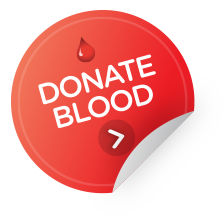Condition Name
|
Summary of Proposed Changes
|
Acquired haemophilias and congenital haemophilia with inhibitors
(formerly Coagulation Factor Inhibitors (alloantibodies and autoantibodies), including acquired haemophilia, acquired von Willebrand syndrome, inhibitors to factor VIII in haemophilia A, and inhibitors to factor IX in haemophilia B)
Condition proforma
 (pdf) (436.08 KB) (pdf) (436.08 KB)
 (docx) (56.21 KB) (docx) (56.21 KB)
|
- Name shortened to more concisely reflect the two main groups of specific conditions.
- Three indications have been developed to support the different qualifying criteria and dosing regimens.
- Immunosuppressant therapy must have been trialled and failed or contraindicated
- A haematologist is required for diagnosis and review which is required each six months
- See the condition proforma for detailed information
|
Acute leukaemia in children
Condition proforma
 (pdf) (373.8 KB) (pdf) (373.8 KB)
 (docx) (46.53 KB) (docx) (46.53 KB)
|
- This condition will no longer be listed separately as patients can qualify where they have a low IgG level under ‘Secondary hypogammaglobulinaemia related to haematological malignancies and post haemopoetic stem cell transplant’
- See the condition proforma for detailed information
|
Autoimmune neutropenia
Condition proforma
 (pdf) (413.08 KB) (pdf) (413.08 KB)
 (docx) (51.73 KB) (docx) (51.73 KB)
|
- Two indications have been defined to allow initial therapy and relapse of disease
- Immunosuppressant therapy must have been trialled and failed, or contraindicated
- A haematologist is required for diagnosis due to the rarity of the condition and requirement for bone marrow biopsy
- See the condition proforma for detailed information
|
Fetal and neonatal alloimmune thrombocytopenia (FNAIT) (formerly Feto-maternal/neonatal alloimmune thrombocytopenia (FMAIT/NAIT))
Condition proforma
 (pdf) (439.68 KB) (pdf) (439.68 KB)
 (docx) (59.17 KB) (docx) (59.17 KB)
|
- This condition will move from the Emerging to the Established therapeutic role category.
- Access to a higher dose in the latter stages of very high risk pregnancies has been supported through a stratified treatment approach
- See the condition proforma for detailed information
|
Haemolytic disease of the Fetus (HDF) (formerly Haemolytic disease of the fetus and newborn (HDN)
Condition proforma
 (pdf) (433.03 KB) (pdf) (433.03 KB)
 (docx) (60.93 KB) (docx) (60.93 KB)
|
- The name has been changed as treatment of this condition with Ig is now limited to the fetus (i.e. Ig therapy given to the pregnant mother) and not to the neonate. Intensive phototherapy (light therapy) is now regarded as the most effective therapy to reduce the need for exchange transfusion in neonates. This revision accords with the recently published Patient Blood Management Guidelines Module 6 –Paediatric and Neonatal (2016).
- An indication has been devised to accord with these guidelines i.e. “Haemolytic disease of the fetus with high risk of early fetal hydrops or death.”
- The diagnosis must be made by a haematologist, general physician, paediatrician or obstetrician.
See the condition proforma for detailed information
|
Haemolytic transfusion reaction (HTR) not associated with identifiable red cell antibodies. (formerly Haemolytic transfusion reaction)
Condition proforma
 (pdf) (418.35 KB) (pdf) (418.35 KB)
 (docx) (58.1 KB) (docx) (58.1 KB)
|
- The name has changed as Ig therapy is now limited to haemolytic transfusion reaction not associated with identifiable red cell antibodies as benefit is derived from Ig therapy for this subset of patients.
- Two exclusion criteria have been added
- Sickle cell disease has been removed from ‘Not supported’ as these patients are more likely to present with HTR not associated with red cell antibodies. Note however that Sickle Cell Disease does not qualify for Ig therapy in the absence of HTR not associated with identifiable red cell antibodies
- See the condition proforma for detailed information
|
Pure Red Cell Aplasia (PRCA)
Download
 (pdf) (416.51 KB) (pdf) (416.51 KB)
 (docx) (59.72 KB) (docx) (59.72 KB)
|
- A new indication has been developed based on recent publications
- This rare condition must be diagnosed by a haematologist
- See the condition proforma for detailed information
|
Pure white cell aplasia (PWCA)
Download
 (pdf) (385.89 KB) (pdf) (385.89 KB)
 (docx) (46.07 KB) (docx) (46.07 KB)
|
- It is proposed that this condition will no longer be supported for funded access to immunoglobulin treatment as there are more effective treatments for this condition
- See the condition proforma for detailed information
|

